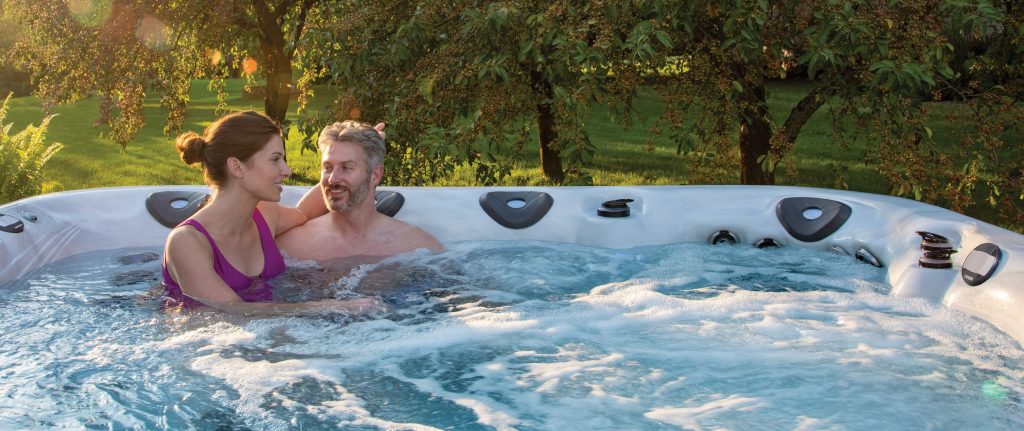Jets, shell, cabinet, pump…when you hear hot tub lingo, do you find yourself wondering what’s what? When you first start researching hot tubs, all that spa talk can sound like a foreign language. It’s almost like talking to the IT Guy when your work computer freezes up!
Not to worry. Hot tub lingo is simple to learn and understand. We’ll have you speaking it like a pro in no time.
Cabinet and Shell
All hot tubs have basic anatomy that includes the cabinet and shell. But, when you first hear a spa dealer mention them by name alone, it can be hard to know which is which. The cabinet is on the exterior. It’s the outer walls of a hot tub, and in most cases (when it comes to high-quality hot tubs), it’s customizable.
The shell is the interior lining. Like the cabinet, you can customize the shell on a high-end spa. When you’re shopping for a Master Spas® hot tub with us, we’ll show you both shell and cabinet color choices, so the finish fits your preferences and complements your deck/house.
Jets
Jets are one bit of hot tub lingo you probably already know. However, a common misconception is that the amount of jets matters most when you’re comparing hot tubs. Actually, it’s the action and position of the jets that counts. Learn more about jets (and picking a great hot tub) in this article.
Insulation
Just like your house, a hot tub needs insulation to run efficiently. Here’s where high-end and entry-level hot tubs differ greatly. Premium components and insulation mean that a high-quality, energy-efficient hot tub can cost as little as $10-$20 a month to operate. An entry-level spa has a lower price tag, but it also has lower quality insulation and will cost a lot more to run every month. So, when you’re talking hot tubs, be sure to ask your dealer about each model’s insulation and energy-efficiency.
Size
When picking a hot tub, the size matters for two reasons. One, you need to make sure it will fit in the space you have available. Keep this in mind when you’re looking at spa specs: the height refers to the actual wall measurements while the depth is referring to the inside water level.
Second, it needs to be the right size for the number of people who will be using it. Hot tubs come in a variety of sizes, from small ones that seat 2-3 people to large ones that can seat 7 or more. If you have a large family or plan to throw hot tub parties, you’ll need a large spa. However, if it’s just going to be 1 or 2 people using the hot tub, a small one is ideal. It will save you money upfront, as well as operating costs over time.
Seating
Like jets, you’ll find a variety of seats on hot tubs. Some allow you recline for a full body massage while others are simply for sitting and relaxing. The seating is one reason we always advise our customers to take a test soak before picking their hot tub. When you try out a few spas, you’ll find that some seats are more comfortable for you. Contact us to schedule your private wet test.
Cover
It might seem like a basic component, but actually, a high-quality hot tub cover makes a big impact. Not only is it vital for keeping your water clean and balanced, it also locks in the heat and conserves energy. A worn cover allows heat to escape, which means your electric bill goes up. So, a good hot tub cover is a necessity.
Now that you’re in-the-know on hot tub lingo, read the ABCs of Owning a Hot Tub to further your hot tub education. Then, come visit us in Las Cruces to learn everything else you want to know. We’ll answer all your questions, show you our high-quality Master Spas hot tubs, and even schedule a test soak so you can experience them firsthand! There’s no better day than today to start building the life you’ve always dreamed of.

